#(Tortula Mucronifolia)
Text
The Last Flower At The Top of The World—and The Perilous Journey To Reach It
Scientists Journeyed to a Stretch of Gravel Off The Coast of Greenland—The Farthest North You Can Go and Still Walk on Land. These Photos Show What They Found There.
— By Sarah Gibbens | Photographs byJeff Kerby | May 08, 2024
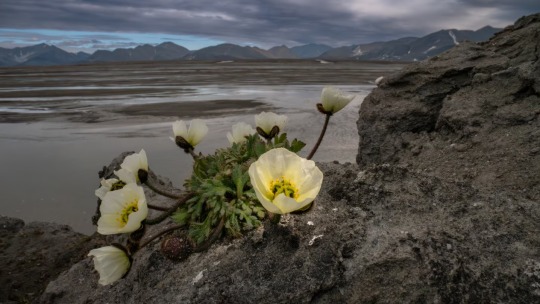
An Arctic Poppy thrives on the Northern Coast of Greenland. Among the plant life in this region, these hardy Flowers are like Giants. Some, like this one, grow in clumps that protect themselves from harsh weather. Like a satellite dish, they will slowly turn to follow the sun. On an expedition to understand what lives at this latitude, an Arctic Poppy like this was found about 20 inches south of the World's Northernmost Plant.
At the top of the Earth, the northernmost stretch of land a person can stand on is Inuit Qeqertaat, also named Kaffeklubben Island by early 20th Century Danish Explorers. The region is a dark gray stretch of gravel on the northern coast of Greenland where land slowly gives way to frozen sea ice.
To find what lives amid these rocky soils, climate change researchers and National Geographic Explorers Brian Buma and Jeff Kerby and their team embarked on a journey to survey the region. There, they found a common species of moss (Tortula Mucronifolia), the world's northernmost plant, and a yellow and lime-green Arctic poppy (Papaver Radicatum), growing just a few inches south of the moss.
On the nearby mainland, Greenlandic archaeologist Aka Simonsen discovered a ring of roughly 700-Year-Old Inuit Stones, which may be the northernmost archaeological remains.
Growing in Extremes: The Northernmost Stretch of land in the World, Inuit Qeqertaat, sits off the coast of Johannes V. Jensen Land, a Peninsula in Far Northern Greenland. National Geographic Explorer Brian Buma traveled there to find the northernmost plant-a common moss—and the northernmost flower a few inches south-an Arctic poppy.
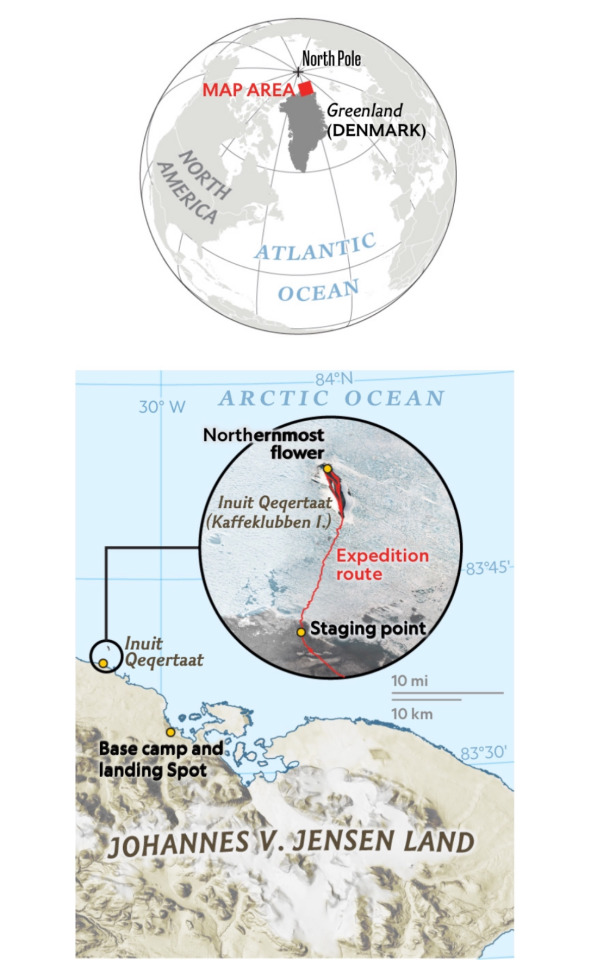
Rosemary Wardley, NGM Staff; Martin Gamache, National Geographic Society Sources: Jeff Kerby, Scott Polar Research Institute; Brian Buma, Environmental Defense Fund; SkySat imagery from July 13, 2023, Planet Labs PBC; ArcticDEM, Version 4.1
The research team left their own mark on the mainland coast, staking plots and recording the vegetation they contained to create a highly detailed digital map of the area they surveyed. Information collected from this trip will be the first data logs in what Buma and Kerby hope will be a long timeline of research in the far northern region.
Here, above the Arctic Circle, the planet is warming four times faster than anywhere else on Earth. Changes here will have ripple effects across the globe, which is why the team braved harsh conditions to find what lives on the edge.
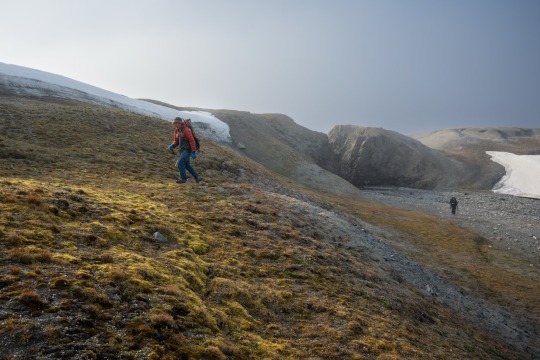
The expedition team was led by climate scientist and National Geographic Explorer Brian Buma. The north coast of Greenland was used as a staging point while shuttling gear across sea ice to Inuit Qeqertaat (Kaffeklubben Island).
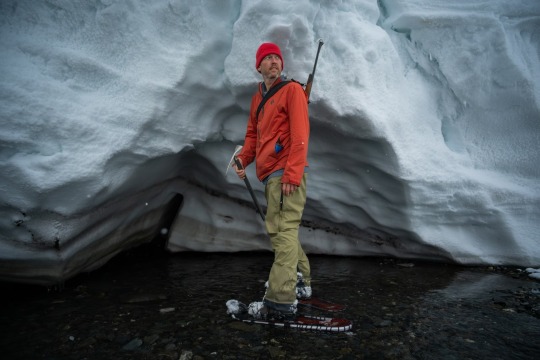
Brian Buma collected samples from different layers of this snow glacier to understand the unique properties of water in this rarely visited region. This part of the world is a polar desert, and precipitation is scant, so the samples in this glacier represent many years of snow.
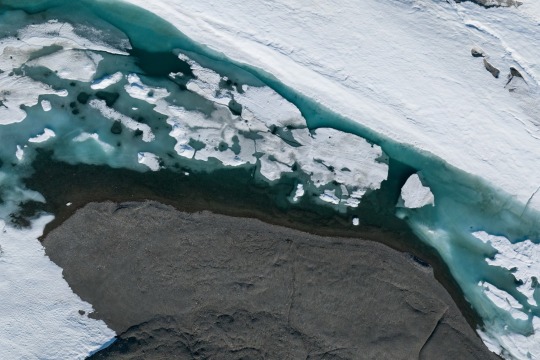
From above, the northern coast of Inuit Qeqertaat—and thus the northernmost stretch of land on Earth—is visible. It was near this shoreline that the team found the edge of terrestrial life, including a common species of moss, officially the farthest north, and the northernmost flower on earth—found about 20 inches south of the moss. The small, gravelly island is about a mile north of mainland Greenland.
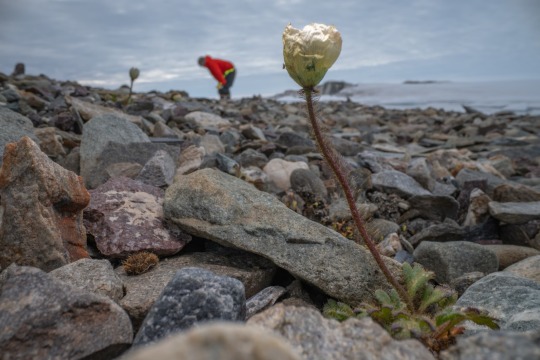
This is the northernmost flower on earth, a lone and somewhat ragged Arctic Poppy, sitting near the shoreline of Inuit Qeqertaat. Poppies dotted the northern edge, with a few purple mountain saxifrage (Saxifraga oppositifolia) only slightly farther up the slope. In the background, Brian Buma surveys various contenders for northernmost plant before a final survey determines this flower to be the official runner-up. Seen just behind the flower, a tuft of ‘Mucronate screw moss’ (Tortula mucronifolia) claims that title.

Identifying mosses and other tiny Arctic flora requires a hand lens and careful attention to detail. Up close, Brian Buma examines their adaptations to cold weather, such as small hairs coating a plant's exterior.
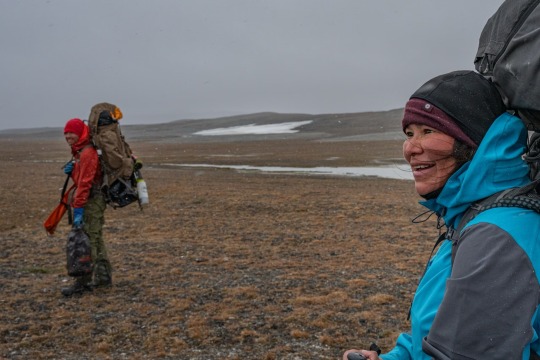
Aka Simonsen, a Greenlandic archeologist, prepares to leave camp with Brian Buma, just as the weather begins to turn. After just a few hours the northernmost island, the team left, intending to return the next day. The window to return quickly closed after a few days when bad weather turned into a storm that brought strong winds and heavy precipitation. The July storm dumped nearly a foot of snow and drifts reached several feet. Harsh conditions trapped the team at their base camp for a week.
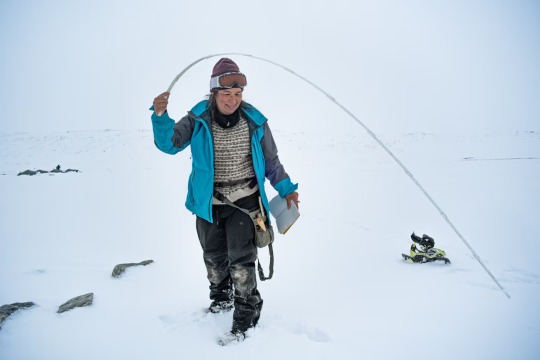
Aka Simonsen measures a ring of large stones that may have been used to anchor a tent. The stones are roughly 700 years old and likely left by the Thule people. These artifacts were found on the mainland, near the team's base camp and could be the northernmost documented archeological site on Earth.
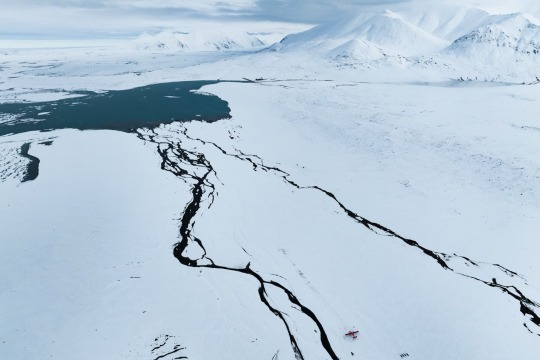
When the plane returning to retrieve the team landed, it got stuck in snow, and a makeshift runway had to be constructed by scooping snow with snow shoes. Gravel was placed by hand so the plane's tires wouldn't slip on ice or stick in snow during takeoff. Scientists who return to this northernmost region will be able to use the team's detailed digital map to chart how the ecosystem is changing as the planet warms.
#Environment#Environmental#Last Flower 🌺#Top of the World 🌎#The Perilous Journey#Scientists Journeyed | Coat of Greenland 🇬🇱#Arctic Poppy#Giant Flowers 🌺 🌸 💐#National Geographic Explorers Brian Buma | Jeff Kerby#(Tortula Mucronifolia)#Arctic poppy (Papaver Radicatum)#Inuit Qeqertaat#Kaffeklubben#20th Century Danish 🇩🇰 Explorers 🧭#700-Year-Old Inuit Stones#Johannes V. Jensen Land
14 notes
·
View notes